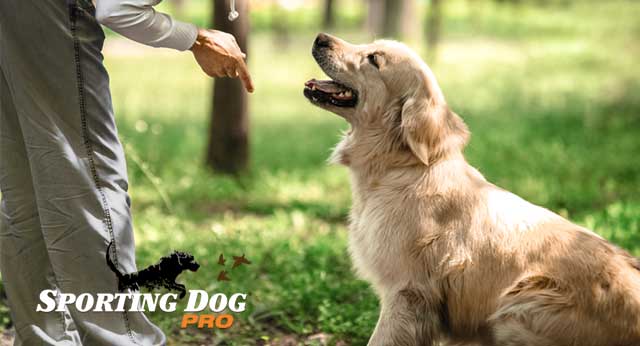You have no items in your shopping cart.
Proper Use Of The "NO" Command

The one word your dog will probably hear more than any other word in her lifetime will more than likely be, the word “No.” The way you use the word “No” can make all the difference in her training and her all-around demeanor. Well behaved and well trained dogs are almost always dogs that understand your authority and respond to your commands. A few simple do’s and don’ts can keep you on track and help to avoid misbehavior.
Don’t Overuse
Just like raising children, an overused “No” for your pup with no repercussions will make the word useless or at best, an attention getter but, not a true command. If you just repeatedly say “No” and follow it with another “No” or another “No said in a different tone, it will have no effect on her behavior and can actually have a negative effect on your whole training regimen. You shouldn’t use the “No” command for casual play when there is no real repercussions for her actions, especially early on in the training process.
Don’t Say No With Affection
Your dog needs to know that when you use a command, especially the “No” command that you mean business. Defining your role in your dog’s world will help her to realize her place in the family. A gentle spoken or whined “No” is going to backfire when you need your pup to listen to you. When your dog is young and everything she does looks cute to you and you speak her commands in a sweet tone you will create a relationship where your dog sees you on the same level as herself. It’s not that your dog needs to earn your love it’s that your dog needs to be able to follow commands in order to stay safe and to be able to do the tasks that you and her together she set out to accomplish.
Do Follow With An Action
No, needs to be followed with an action. If you repeatedly say no to your dog with no action more than likely she will ignore you and continue what she’s doing. You must either remove her from the situation or show her by holding her back that your no means no. It is much easier to start from the beginning using an action than to go backwards and retrain because you didn’t follow up your command. For some situations during training it is easier to just use a training collar along with the command to help make sure he knows you have a little bite with your bark.
Do Offer Alternatives
It is also important to offer your dog alternatives. For example, if you tell her “no, don’t chew on that electrical cord.” You should have an alternative to her boredom, like a bone or chew toy. Your dog will understand that she can’t do one thing but, can do another. If the issue at hand is not involving an actual object then it is important to make sure you offer an alternative such as, to turn her towards another direction or to show her another way.
Do Offer Praise
Once your dog obeys your command, it is pertinent that you praise her. All of the discipline in the world can’t beat a good belly rub or a pat on the head. Your dog will respond better to any command if she is used to being praised after following a command.
The whole goal when it comes to the “No” command is make your dog stop what she’s doing and do something different. A well behaved dog that understands what is expected out of her can make your dog ownership much more pleasureable.
Shop Dog Training Gear and Supplies
(Free Shipping on purchases of $125 or more. 30-Day Guarantee.)









